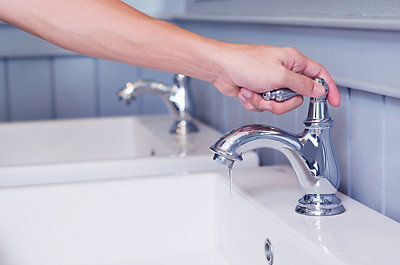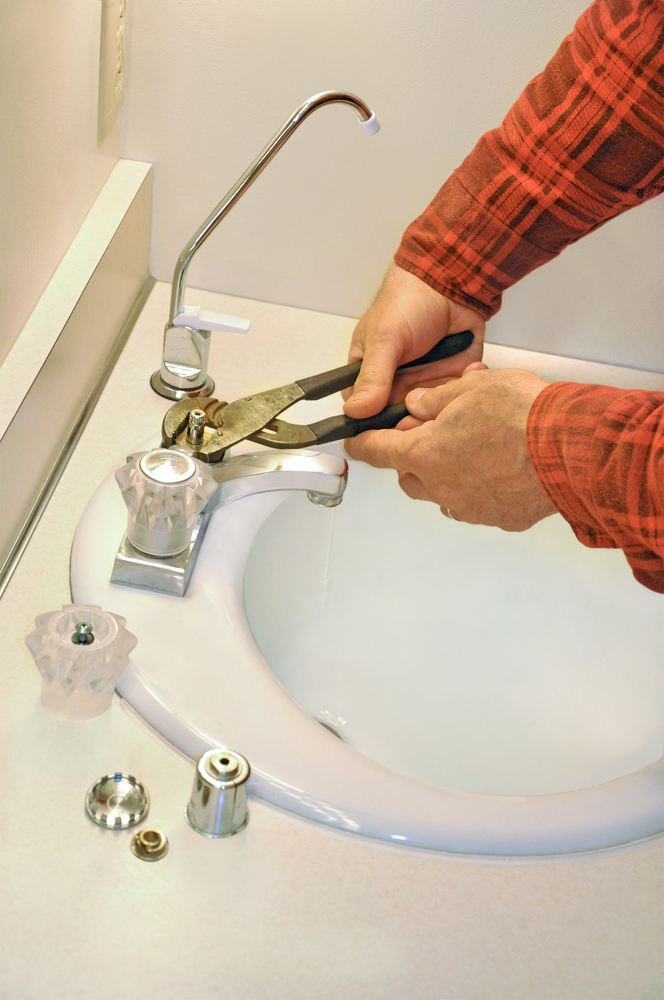Why It's Vital to Resolve a Dripping Faucet
Why It's Vital to Resolve a Dripping Faucet
Blog Article
Each person has their own individual theory in relation to What Causes Leaky Faucets & How To Fix Them.

Leaking faucets might seem like a small hassle, however their influence goes beyond just the nuisance of the audio. From drainage to sustaining unnecessary economic costs and health and wellness threats, ignoring a leaking faucet can cause numerous effects. In this short article, we'll explore why it's vital to resolve this usual house concern without delay and effectively.
Waste of Water
Environmental Effect
Dripping faucets contribute considerably to water wastage. According to the Environmental Protection Agency (EPA), a single faucet dripping at one drip per secondly can throw away greater than 3,000 gallons of water each year. This not just stress water resources however also affects ecosystems and wild animals depending on them.
Financial Expenses
Boosted Water Expenses
Past the environmental impact, trickling taps can inflate water bills considerably. The collected wastage gradually translates right into higher utility expenditures, which can have been stayed clear of with timely repair work.
Potential Building Damage
Furthermore, prolonged trickling can result in damage to components and surface areas surrounding the tap. Water build-up can cause staining, corrosion, and even architectural issues if left ignored, resulting in added repair expenses.
Health and wellness Problems
Mold And Mildew and Mold Growth
The continuous visibility of moisture from a trickling faucet develops an excellent environment for mold and mildew and mold development. These fungis not only jeopardize indoor air high quality yet also present health dangers, particularly for individuals with respiratory system conditions or allergic reactions.
Waterborne Diseases
Stationary water in dripping taps can come to be a breeding ground for microorganisms and other microorganisms, increasing the danger of waterborne conditions. Contaminants such as Legionella germs grow in stagnant water, possibly resulting in severe illnesses when ingested or breathed in.
Do it yourself vs. Professional Repair service
Benefits and drawbacks of DIY Repair Work
While some may attempt to deal with a dripping faucet themselves, DIY fixings come with their own set of difficulties. Without appropriate expertise and devices, do it yourself efforts can worsen the concern or bring about insufficient repairs, prolonging the problem.
Benefits of Employing an Expert Plumber
Working with a specialist plumber guarantees that the underlying root cause of the trickling tap is resolved properly. Plumbers possess the know-how and tools to detect and fix tap problems successfully, saving time and lessening the threat of more damages.
Step-by-Step Guide to Repairing a Dripping Faucet
Tools Needed
Before attempting to repair a leaking faucet, gather the required tools, consisting of an adjustable wrench, screwdrivers, replacement parts (such as washers or cartridges), and plumber's tape.
Typical Tap Issues and Their Solutions
Recognize the sort of faucet and the particular problem triggering the drip. Typical issues include worn-out washers, rusty valve seats, or defective O-rings. Refer to supplier directions or on the internet tutorials for step-by-step advice on repairs.
Safety nets
Routine Upkeep Tips
To avoid dripping taps, perform routine upkeep such as cleaning aerators, evaluating for leaks, and replacing damaged parts promptly. Furthermore, think about mounting water-saving gadgets or upgrading to more effective fixtures.
Importance of Prompt Repair Works
Addressing dripping faucets as soon as they're discovered prevents additional water waste and potential damage, ultimately conserving both water and money in the future.
Impact on Building Worth
Perception of Well-Maintained Building
Keeping a residential property in good condition, including resolving maintenance problems like dripping faucets, boosts its viewed worth and worth among prospective customers or renters.
Impact on Resale Worth
Characteristics with properly maintained plumbing components, including taps, command greater resale worths in the property market. Dealing with leaking taps can add to a favorable impression during residential or commercial property assessments and arrangements.
Environmental Responsibility
Private Contribution to Preservation
Taking duty for fixing leaking taps aligns with wider initiatives towards water preservation and ecological sustainability. Every person's activities jointly make a significant effect on protecting priceless sources.
Lasting Living Practices
By focusing on punctual fixings and adopting water-saving habits, individuals add to lasting living practices that benefit both present and future generations.
Verdict
Attending to a trickling tap surpasses plain ease; it's an essential action toward conserving water, reducing financial prices, and securing health and wellness and property. Whether via do it yourself repair services or expert support, taking action to fix trickling faucets is a small yet impactful method to promote liable stewardship of sources and contribute to a much healthier, extra sustainable future.
Most Common Reasons for a Leaky Faucet and How to Stop the Drip
Whether it’s your kitchen faucet leaking or a bathroom faucet leaking, one leaky faucet can waste anywhere from three to 30 gallons of water every single day. If the constant drip-drip-drip doesn’t get your attention, your water bill will. The good news is that, by following a few simple steps, chances are pretty good you can fix the problem yourself.
Why is it dripping?
Before you start taking things apart, let’s break down some of the most common causes of a leaky faucet.
Bad O-ring.
A cartridge is a valve that controls the flow of water into the faucet spout. On cartridge faucets there’s an O-ring—the little disc attached to the stem screw that holds the faucet handle in place. If it’s loose or worn-out, it can cause your sink handle to leak. Of course, the cartridge itself could be worn out. If that’s the case, make sure you replace it with the exact same kind.
Corroded valve seat.
The valve seat connects the faucet and the spout. If the leak seems to be coming from the spout, it might be because a buildup of water sediment has corroded the valve seat.
Worn-out washers or seals.
A leaky spout could be caused by a bad washer that rests against the valve seat. It’s just a matter of time before friction takes its toll. It could also be the wrong size washer or one that’s been installed incorrectly. Water sediments can also corrode inlet and outlet seals.
Water pressure.
If the faucet only drips now and then, or when you turn the handles a certain way, you should probably check your home’s water pressure.
Loose or broken parts.
The adjusting ring and packing nuts in the stream screw can become loose over time, causing your sink handle to leak. Try tightening or replacing the packing nut. If the leak is coming from the pipes underneath the sink, you probably have a broken pipe or fitting. If that’s the case, you should definitely call a plumber.
Know your faucet.
Faucets come in a variety of types. Each one has its own assembly—and its own possible causes of leaks. Learning about the four most common kinds of faucets will help you know how to take them apart and make any repairs.
How to stop a leaky faucet
Fixing that leaky faucet doesn’t have to take a lot of time, money, or expertise. It’s usually a simple matter of replacing a worn-out washer or gasket, a loose O ring, or another part. Chances are really good you can do this yourself if you follow these simple steps.
Shut off the water.
Before you tackle the faucet, cut off the water supply to the sink. There should be one valve for hot and one for cold. Hand-turn them clockwise with your hands till they close. If there are no valves under the sink, head to the basement and shut off the main water supply to the house. Then turn on the faucet until it empties out the water that’s still in the line and you’re ready to start. It’s a good idea to cover the sink drain with a plug or a rag so you don’t lose any small pieces and parts while you’re working.

Hopefully you enjoyed our part about Leaky Faucets: Why They Happen & What to Do About Them. Many thanks for taking the time to read through our blog post. You should set aside a second to distribute this write-up if you appreciated it. Thanks for your time. Please come by our site back soon.
Report this page